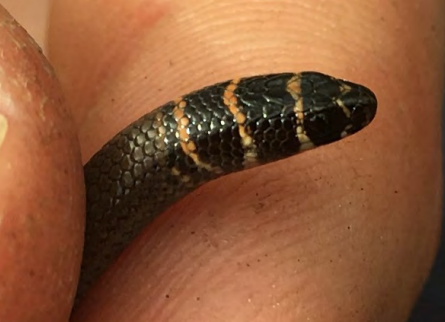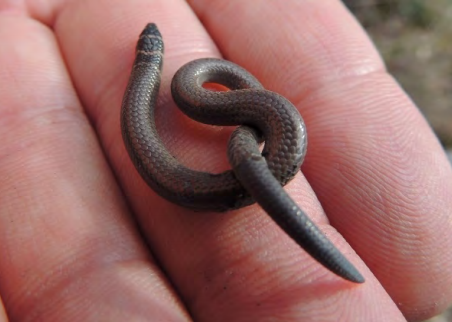Introducing the collared delma, one of only two lizards in the Bundaberg Region listed as vulnerable under the Environment Protection and Biodiversity Conservation Act.

Delma Torquata is the smallest of the legless lizards, reaching up to 19cm fully grown.
According to its Australian Government conservation listing, the collared delma is brown to reddish-brown in colour, becoming grey to bluish-grey on the tail with a slightly paler belly.
It has large black bands across the head and nape interspaced with four cream-yellow stripes.
The collared delma normally inhabits eucalypt-dominated woodland and open forest where it is associated with exposed rocky outcrops. The ground cover is predominantly native grasses.

The main identified threat to the collared delma is the loss and modification of habitat from urban and agricultural development.
It appears to be a sedentary species that stays within a very small area, possibly using the same rock for shelter.
Other threats include fire and invasive weeds.
A 2016 field survey located several near Gin Gin.

Researchers found one individual for every 910 rocks searched, substantially lower than the capture-rate recorded in 1998 of one individual for every 150-200 rocks searched within suitable habitat.
For a full list of the 124 reptiles that call the Bundaberg Region home, visit here.







